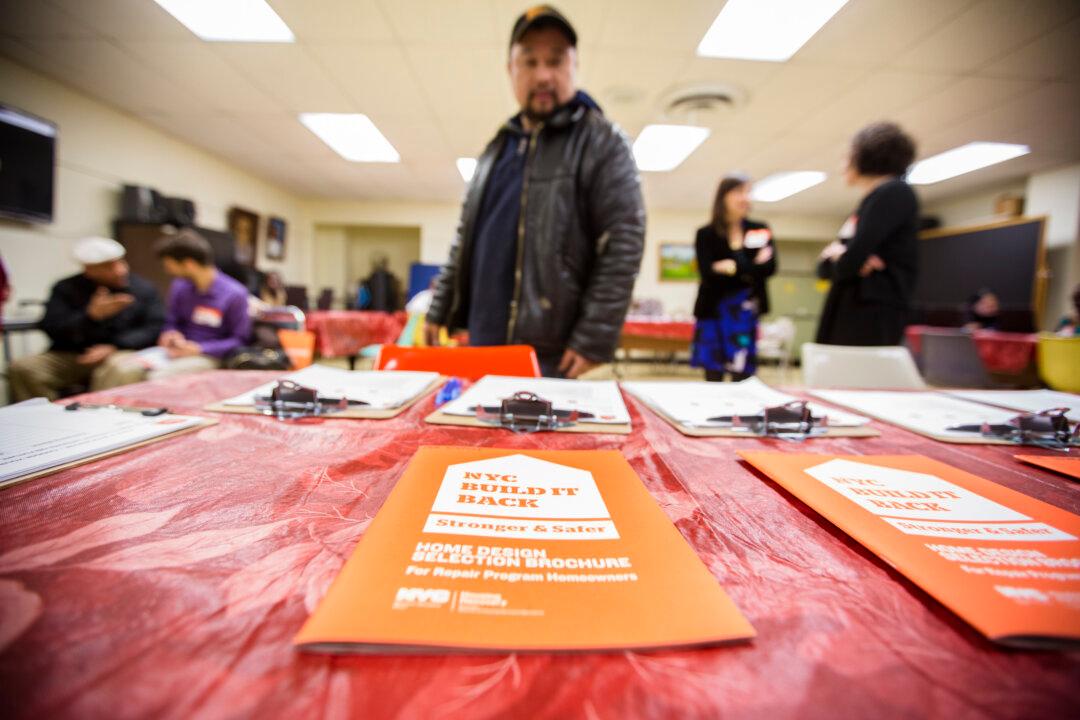NEW YORK—New York City’s beleaguered Superstorm Sandy housing recovery program, Build It Back, cost taxpayers a whopping $6 million just to create, new documents obtained from the city’s Housing Recovery Office reveal.
According to the data obtained through a freedom of information law request, The Boston Consulting Group (BCG), creators of Build It Back, and its subcontractors charged the city $6.1 million between April and August of 2013.
BCG could not be reached for comment, but its website explains that it was recruited by the Mayor’s Office of Housing Recovery (HRO). According to BCG, when faced with the “challenging and complex task of assessing the damage and designing a recovery program,” the mayor’s office enlisted its “help in leading that charge.”
“The effort focused on determining the storm’s total damage and designing an aid delivery system for long-term rebuilding under what ultimately became the ‘Build it Back’ program,” states BCG’s website. In what it describes as something “radically different from many earlier recovery programs,” BCG used data of areas hit by Sandy to find both damage and victims. The goal was to set priorities and make funding requests before applications for help were received.
The lion’s share of the money to design Build It Back went straight to BCG, with monthly payments ranging from $1.03 million to $1.48 million. The multinational management consulting firm, which describes itself as the world’s leading adviser on business strategy, was paid a total of more than $5.12 million.
Subcontractors of BCG were also paid handsomely for their part in designing Build It Back.
A New York City-based digital design and strategy services company, CloudRed, was paid over $290,000 to design a logo, flyers, and billboards. They also worked on creative direction, radio spots, print ads, and a social media campaign. They could not be reached for comment.
“Transparency, clarity, and a mission to help were the main themes of the NYC Build it Back manifesto, circulated throughout the team,” reads CloudRed on its website about its work on Build It Back.
The remaining consultants also took generous fees for their role in constructing the program.
The BCG subcontractors were listed as H2 Bravo, which was paid $253,075; Shane, which was paid $121,821; and CBI, which was paid $315,956.
The NY Economic Development Corporation, which acted as an intermediary, declined to provide details of the consultants’ work.
Build It Back was officially launched in June 2013, and registration closed in October of the same year. Almost 21,000 multifamily and single-family and homeowners registered for the program that promises to repair, rebuild, elevate homes, reimburse homeowners for repairs, and acquire homes for redevelopment.
Progress has been slow relative to the need. According to an April 17 Office of Housing Recovery report, only 30 reimbursement checks have been mailed out, nine homes had started construction, and 935 applicants had chosen one of the program’s options.
The numbers are constantly changing. The NYC Sandy Funding Tracker was last updated April 7.




